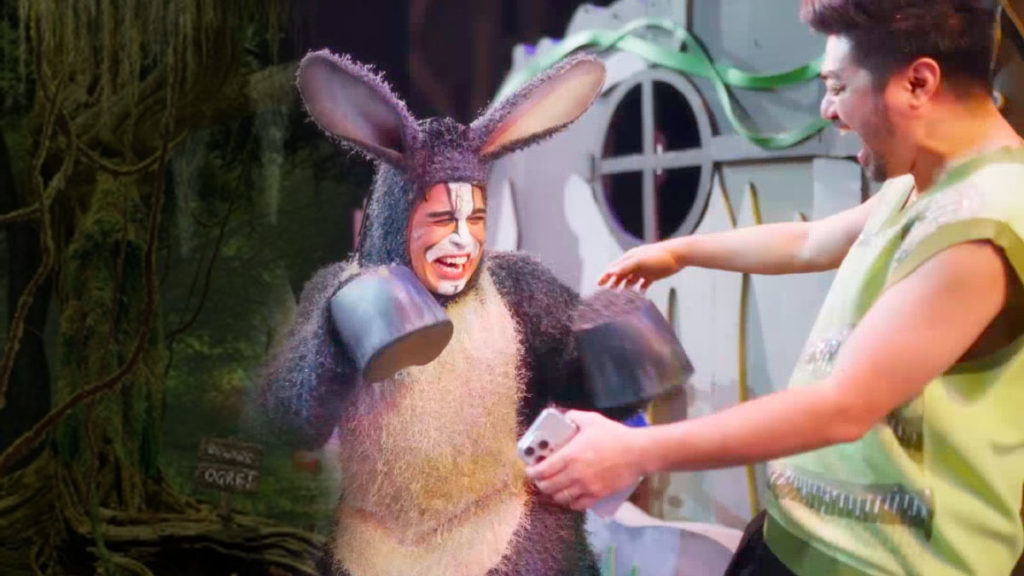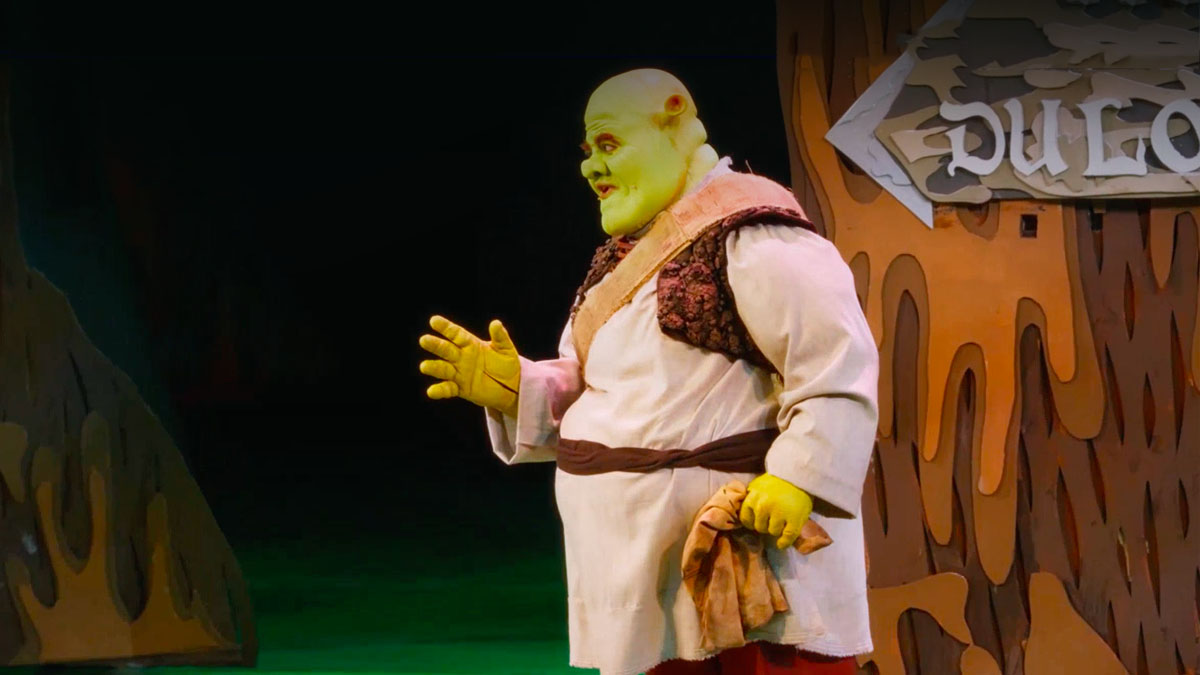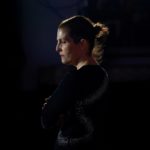The landscape of local Philippine theater is a peculiar and often treacherous terrain for foreign properties. All too frequently, high-profile imports—even those with a beloved pedigree—suffer an ignominious fate, collapsing under the weight of cultural dissonance. The core challenge often lies in the casting: finding local performers who can genuinely inhabit roles that are so far removed from their own cultural context, and have the necessary talent to avoid inauthenticity. This challenge is precisely why the arrival of Dreamworks’ Shrek The Musical at the Newport Performing Arts Theater was met with a cautious, almost cynical eye.

Yet, what this production has unexpectedly revealed is a fundamental truth about storytelling that transcends borders. While many musicals demand a deep, nuanced understanding of a specific Western worldview, Shrek’s secret lies in its genius parentage: the universality of the classic fairy tale, bolstered by the ubiquity of the blockbuster film franchise. It is this combination—the familiar, foundational narrative of unlikely and misunderstood heroes that subvert and rise above expectations—that provides a virtually bulletproof scaffold. The Full House Theater Company, in this case, has been given a blueprint so globally recognizable that the distance between the performer and the context is dramatically and delightfully minimized. What results is a production that manages to find its footing where many others have stumbled, proving that some stories, when told with conviction, simply refuse to be lost in translation.
A Fairy Tale Retold
Under the direction of Dexter Santos (Ang Huling El Bimbo, Grace), Shrek The Musical (Music by Jeanine Tesori, Book and Lyrics by David Lindsay-Abaire) plunges the audience into a land far, far away, following the journey of an ogre named Shrek (played by Jamie Wilson), who simply desires solitude in his swamp. His quiet life is abruptly interrupted when the diminutive, tyrannical Lord Farquaad (a scene-stealing Alfredo Reyes) banishes a chaotic collection of fairy tale creatures to Shrek’s property. To reclaim his peace, Shrek strikes a deal with Farquaad: he must rescue the beautiful, yet mysteriously isolated, Princess Fiona (Krystal Kane) from a dragon-guarded tower. Accompanied by the endlessly chatty Donkey (Topper Fabregas), this unconventional quest becomes a vibrant, hilarious, and surprisingly tender exploration of identity, friendship, and the messy reality of what happens when happily-ever-after is redefined.
A Triumph of Visual Craftsmanship
Unlike some other productions that struggle a LOT with disconnected visual identities, the production design for Shrek The Musical is a masterclass in thoughtful integration. The challenge of transforming the vast, sometimes cavernous Newport Performing Arts Theater (NPAT) into a seamless, ever-changing series of fantastical locales—from a dank swamp to a lava-filled castle—was done with genuinely remarkable ingenuity.

The design, helmed by an inspired team, utilizes every tool in the modern theatrical arsenal with a restrained yet effective precision. The LED wall and proscenium are not mere sources of distracting visual noise; they are active, dynamic elements that transition the audience instantaneously, creating immersive, believable worlds. Practical sets and lighting work in perfect harmony with projections, providing a visual wizardry that constantly surprises without overwhelming the narrative. There is no shortage of craft here; the staging is technically superior, demonstrating a level of polish and visual acuity that places it squarely on par with some international productions. This cohesive, high-definition approach to design proves that when visual elements serve the story, they do not just decorate—they fundamentally deepen and enhance the theatrical experience.
The Pillars of Far Far Away
It is in this carefully created sandbox where the fully-Filipino cast is allowed to build their performances. And they built as if the sky was the limit. The cast turn out a brilliant ensemble performance, with each actor deserving of individual, effusive praise. Jamie Wilson’s lynchpin portrayal of Shrek is remarkably sweet, earnest and above all else; real, effortlessly winning the audience’s empathy from his first disgruntled growl, and you could hear the sound of hundreds of hearts breaking in the audience as he pursues Fiona. Opposite him, Krystal Kane provides the necessary vocal firepower and commanding stage presence consistent with the exacting mold of entitled fairytale royalty. Topper Fabregas is a sheer delight as Donkey, a natural scene-stealer whose impeccable comedic timing turns every line into a perfectly weighted punchline. Finally, Alfredo Reyes delivers a demanding, yet phenomenal performance as Lord Farquaad. His great comedic physicality, requiring him to spend much of the runtime on his knees, is nothing short of iconic, drawing the loudest, most well-deserved cheers and laughs from a fired-up audience.
A Blueprint for the Future
The true triumph of this production is not merely its technical competence or the brilliance of its cast; it is the fact that the Full House Theater Company seems to have discovered a vital formula for the future of foreign property adaptation in local theater. Unlike other productions that engage in cultural tokenism—employing superficial, performative garbage that insults the audience’s intelligence—Shrek The Musical succeeds by sheer, sincere organic resonance. It is THE ticket to get, and has emerged as THE musical to see, as we close the year.
The choice of material, the universality of the fairy tale archetype, and the highly accessible film franchise essentially narrow the cultural context gap not through forced iconography, but through shared global familiarity. By simply mounting a production of exceptional quality and allowing immensely talented local artists to inhabit the roles truthfully, the company achieved something profound. They have proven that by not trying too hard to ‘localize’ the aesthetics, they retain the authentic soul of the original creative work without sacrificing the profitability of a high-profile import. This success serves as a quiet, yet powerful, lesson that other local theater companies must learn (hopefully soon): faith in the material and uncompromising talent is the only Filipino-washing necessary. This production is, ultimately, a vibrant, resounding YES to the idea that not only is theatrical excellence universally understood, but that it can be achieved with a little bit of luck, a little bit of magic, and a lot of creative integrity.
Stay locked in to PalabasTayo.com for your daily dose of film, TV, music, art, fashion, food, and all things lifestyle and entertainment like this. You may also follow and subscribe to our social media accounts: Facebook, YouTube, Instagram, TikTok, X, and Kumu.






















